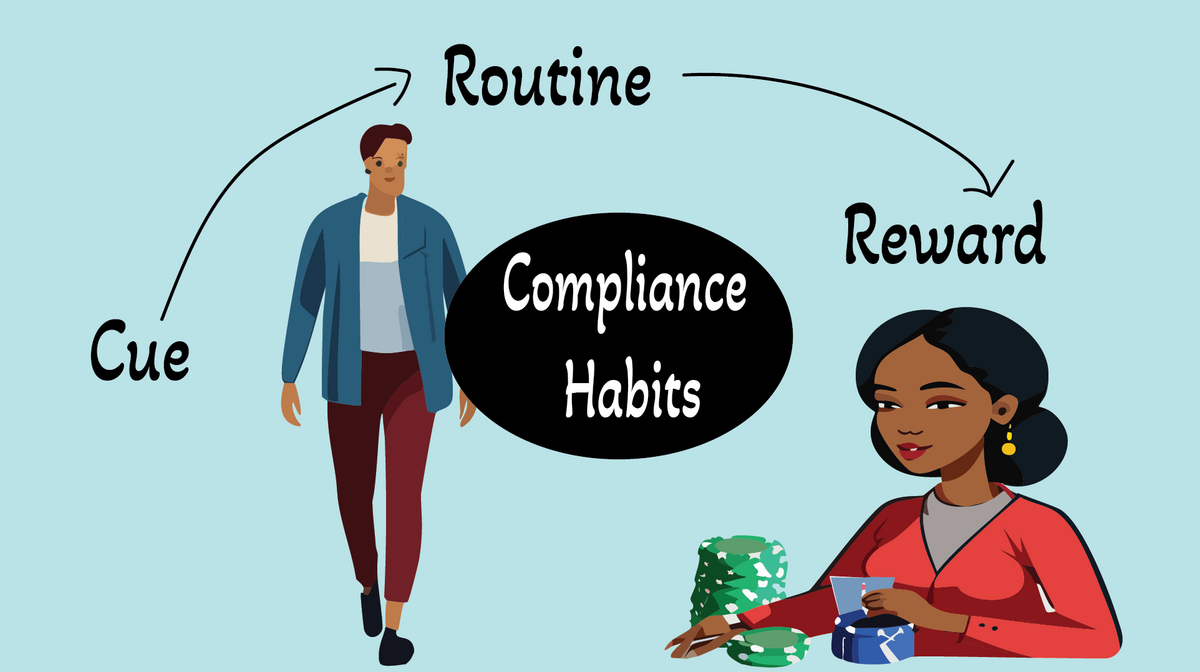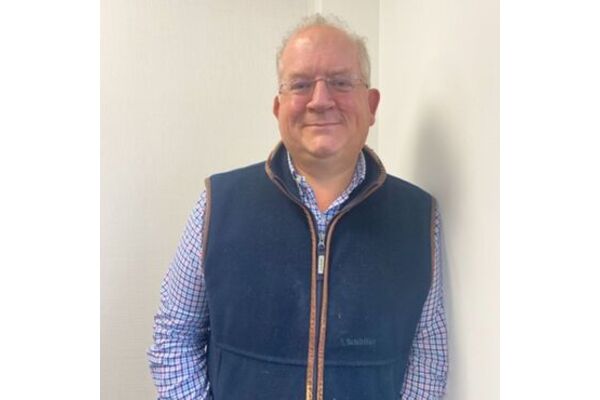
Institute Insights - Organisations are just a “Mass of Habits”: Insights for Compliance from Sleepwalking Murderers and Compulsive Gamblers
The intelligence of habits
“All our life, so far as it has definite form, is but a mass of habits—practical, emotional, and intellectual—systematically organized for our weal or woe, and bearing us irresistibly towards our destiny, whatever the latter may be.” — William James, Psychologist and Philosopher.
If life is, as Mr James, contends, “a mass of habits”, how does this translate to our organisations and the people in it?
I examine this question in the context of designing a culture of compliance, using the collective intelligence of:
- real life stories of a woman who gambled away all her money and a man who choked his wife to death;
- leading psychologists on habits; and
- significant reports into Financial Services in Australia between 2018 to 2019.
Notice that I use the word ‘designing’ a culture of compliance and not ‘developing’ one. That’s because I believe that we can create a culture by design if we have the right ingredients.
This article outlines what these ingredients are. However, you will notice that they do not include systems, processes, or controls of any kind. These are of course a given in any compliance programme.
What I focus on are what I call the human elements of any program, the people who use the controls, our employees. Or as I like to also refer to them our ‘compliance users’.
Let’s start with our gambler and sleepwalker.
What the automatic habits of sleepwalkers and gamblers have in common with compliance
The sleepwalker
In July 2008, Brian Thomas called the emergency number claiming he had killed his wife whilst vacationing in Wales. He told police that he had woken up to find a man on top of his wife attacking her.
Brian threw himself on top of this man and put his hands around his neck. The more the man struggled the harder he gripped. He ended up dying. A few moments later Brian realised it was not a man but his wife. Whilst awaiting trial it was discovered that Brian had started sleepwalking as a child and it had continued throughout his adulthood. He was found not culpable.
Charles Duhigg explained in his book, The Power of Habit - Why we do what we do and how to change, that scientists examined the brains of sleepwalkers and found a condition called a sleep terror.
As Duhigg described: “The behaviors of people gripped with sleep terrors are habits, automatic behaviours so ingrained in neurology that... they can occur with almost no input from higher regions of the brain.”
Brian was simply responding to a threat and reacted with an automatic habit.
The Gambler
A few years before Brian killed his wife, a lonely housewife in Iowa named Angie Bachman went to a casino to get away from the mundanity of her life. The casino became her weekly reward for a week of housework. She then started to go after a fight with her kids or husband and ended up going daily. At the casino she could numb her feelings about her life as well as feel excited. As expected, she lost all her money and declared bankruptcy, but that was not the end of her story.
In 2001 Angie’s parents passed away and she inherited US$1 million. She bought new homes for herself and her kids in a new state where gambling was illegal. One day she went out of state to a casino ‘just for fun’ with her daughter. The manager of the casino welcomed her in and spent a considerable amount of time with her. He was trained to uncover information about their most active guests and learned of her inheritance and her move away from gambling.
A few weeks later she was bombarded with invitations for her and her family to come to the casino and was offered airfares and hotel accommodation, all complimentary. She resisted initially but was soon back in the casino. Again, she lost everything. Angie argued before the state court that she gambled not by choice but by habit and shouldn’t bear culpability for her losses. Her argument was also one of automatic habit. She lost.
So, we have one killer and one gambler. Neither intended to do wrong. They were, according to Charles Duhigg, acting out of habit. But what does this have to do with compliance?
Let’s start by examining the findings around the lack of effective risk and compliance within Australian financial institutions.
“How else is charging continuing advice fees to the dead to be explained?"
"The industry has too often been driven by the pursuit of short-term profit at the expense of basic standards of honesty... Too often, the answer seems to be greed – the pursuit of shortterm profit at the expense of basic standards of honesty. How else is charging continuing advice fees to the dead to be explained?"
Haynes then went on to assert that some entities developed a “mindset that regulatory compliance was merely a ‘cost of doing business’ rather than a mandatory or minimum standard for conducting their business.”
What is a mindset?
Let’s consider this not from the context of leading psychologists, but from another Australian report into Financial Institutions: The Prudential Inquiry into the Commonwealth Bank of Australia Final Report, 2018 (the APRA report). The APRA report mentioned mindset 23 times, including:
- “...effective risk management can be impeded by behaviours and shared mindsets....” and
- “Culture can be thought of as a system of shared values and norms that shape behaviours and mindsets within an institution.”
The APRA report also highlighted significant deficiencies in the bank's culture and went on to define the “key elements of organisational culture”.
I urge you to, at least, read pages 82 to 93 of the report, as it has one of the finest breakdowns of culture I have seen, but here is a short summary:
- “Drivers refer to the context, structures and mechanisms that influence mindsets and behaviours...”
- “Mindsets refer to the accumulation of deeply held beliefs, values and attitudes within an organisation...”
- “Behaviours are actions visible to others. They encompass how people use their time, communicate and interact with others, and make decisions and trade-offs, amongst others. Behavioural norms emerge when actions become commonplace.”
Now the only difference between the behaviours of financial institutions and those of our gambler and sleepwalker, is that the latter both claim that they were not culpable. You will recall that Angie claimed that she did not gamble out of choice but out of habit and poor Brian argued that he was asleep.
But is it the case that the people working in the financial institutions were not led by greed but by a mindset? Certainly, there was greed at the higher levels, but how was it that employees, not directly driven by profits, were also embroiled in activities that were to all intents and purposes wrong?
I believe that the answer lies in with what Mr James terms as our ‘mass of habits’.
“Education is for behaviour, and habits are the stuff of which behaviour consists.”
As we can see from the Financial Services Royal Commission, the APRA enquiry into CBA and thousands of other compliance cases before and since, it is not enough to identify risks and implement controls to mitigate these risks.
Is the answer therefore to focus on creating an environment for the right 'mass of habits'?
In James’ Talks to Teachers on Psychology he notes:
“... we are stereotyped creatures, imitators and copiers of our past selves... the teacher’s prime concern should be to ingrain into the pupil that assortment of habits that shall be most useful to him throughout life. Education is for behavior, and habits are the stuff of which behavior consists.”
Let's assume that James was directing his lecture to legal and compliance teams about educating compliance users to promote a culture of compliance in their organisation. I believe he would say something along the lines of:
“... legal and compliance’s primary concern in their role in line 2 should be to define an assortment of clear behaviours, strong mindsets and frequent habits for employees, that shall be most useful throughout their career in the organisation, for line one managers to roll out in their businesses.”
But here is the crux. If we agree that mindset and ‘mass of habits’ are a vital part of forming a culture of compliance, then how do legal and compliance teams successfully identify and educate on the necessary behaviours in a way that form habits?
As we can see from the Financial Services Royal Commission and APRA report, we do not need to be psychologists. What we do need to do is to focus on the granular, everyday activities until they go from being behaviours to form habits.
About the author
With over 25 years of experience as in-house legal counsel, head of risk and compliance, compliance consultant, and trainer, Nicole Rose has worked with global organizations such as Aon, Airbus, Aristocrat, Deliveroo, LinkedIn, Microsoft, Oxfam, Rabobank, ResMed, Rio Tinto, Rolls Royce, The Uniting Church of Australia, Westpac, Wesfarmers and many others. Nicole is now a director and co-founder of Zenira Business Intelligence.
She is also the founder of Untold Compliance. Recognizing the need within global organizations for in-house professionals to create their own legal and compliance training efficiently and cost-effectively, Nicole is dedicated to empowering legal and compliance professionals to produce their own training without the need for outsourcing through her Frame Training Method™.
Visit her website to learn more about her complimentary course and upcoming book, "Told: How in-house legal and compliance professionals secure airtime, gain traction, and transform organizations.”







